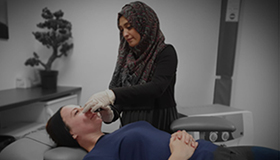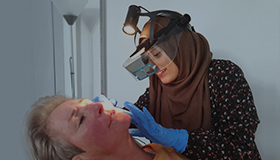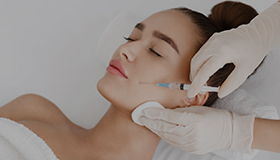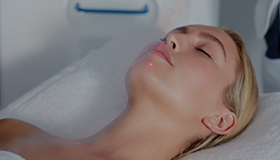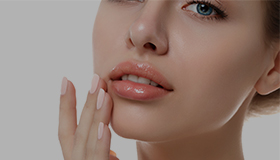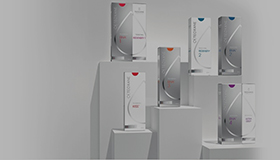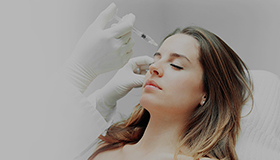Rosacea
Rosacea is a common but poorly understood long-term skin condition that mainly affects the face. It can be controlled to some degree with long-term treatment, but sometimes the changes in physical appearance can have a significant psychological impact.
ROSACEA CAN BE HELPED WITH: (WHICH TREATMENTS):
- AlumierMD® chemical peels
SYMPTOMS OF ROSACEA
Rosacea causes a range of symptoms, although not everyone will experience them all. Most people with rosacea have periods when their symptoms are particularly troublesome, followed by periods when their symptoms are less so.
The main symptoms of rosacea include:
FLUSHING
Flushing is when your skin turns red for a short period – usually a few minutes. It tends to mainly affect the face, although it can spread to your neck and chest. In some cases the redness may be accompanied by an unpleasant feeling of heat. In rosacea flushing is often caused by a certain trigger, such as sun exposure, hot drinks or exercise.
PERSISTENT FACIAL REDNESS
Persistent facial redness (erythema) is like a blush or a patch of sunburn that doesn’t go away, or the sort of blotchy skin often associated with drinking too much alcohol. This can be upsetting for those with rosacea as people can mistakenly assume they are heavy drinkers. The redness usually affects the cheeks, nose and chin, but may spread to other areas, such as the forehead, neck and chest.
VISIBLE BLOOD VESSELS
Over time the blood vessels in the skin may become permanently widened (dilated) and visible. The medical name for visible blood vessels is telangiectasia.
PAPULES AND PUSTULES
If you have rosacea, you may develop round red bumps that rise from your skin (papules) and pus-filled swellings (pustules). These spots appear on your face and are similar to acne. Rosacea used to be called acne rosacea, but the two conditions are quite different. In rosacea there are no blackheads and the skin is not greasy, but dry and peeling. Rosacea spots also don’t cause scarring.
THICKENED SKIN
In the most serious cases of rosacea the skin can thicken and form excess tissue, usually around the nose. This causes the nose to take on a large, bulbous appearance (rhinophyma). Rhinophyma is an uncommon, severe symptom of rosacea and takes several years to develop. It almost exclusively affects men.
Other symptoms associated with rosacea include:
- Sensitive skin – burning, itching, stinging and pain
- Dry, rough skin
- Raised red patches (plaques) on your skin
- Facial swelling (lymphoedema)
- Permanent damage to the face (scarring) almost never occurs in rosacea.
CAUSES OF ROSACEA
The exact cause of rosacea is unknown, although a number of potential factors have been suggested. It’s possible a combination of these factors may be responsible for the condition, although there isn’t enough evidence to say this for certain. Some of the main factors that have been suggested are outlined below.
BLOOD VESSEL ABNORMALITIES
Some experts believe abnormalities in the blood vessels of the face may be a major contributing factor for rosacea. This may explain symptoms of flushing, persistent redness and visible blood vessels. It’s not known what causes these abnormalities. But sun damage may be responsible for degeneration of the elastic tissue of the skin and the dilation of blood vessels.
SKIN PEPTIDES
Recent research has shown external triggers such as ultraviolet (UV) light, spicy food, alcohol (particularly red wine), exercise, stress, heat and cold can lead to the activation of certain molecules within the skin called peptides. Increased levels of these peptides may in turn affect the immune system or nerves and blood vessels (neurovascular system) of the skin. Activation of these systems can cause dilation of blood vessels, redness and inflammation.
MICROSCOPIC MITES
Microscopic mites called demodex folliculorum usually live harmlessly on human skin, but people with rosacea have particularly large numbers, which may play a role in the condition. It is currently uncertain whether the mite is a cause or an effect of rosacea, although some researchers have suggested the symptoms may be caused by the skin reacting to bacteria in the mites’ faeces.
HELICOBACTER PYLORI BACTERIA
Helicobacter pylori bacteria are bacteria found in the digestive system. It’s been suggested these bacteria may be a possible cause of rosacea, although a link hasn’t been proven. One theory is the bacteria may stimulate the production of a protein called bradykinin, which is known to cause blood vessels to expand.
GENETICS
Rosacea seems to be more common in families, although it’s not clear which genes – if any – are involved or how they’re passed on.
PREVENTION OF ROSACEA
If you have rosacea, there are a number of things you can do to help keep the condition under control.
AVOID TRIGGERS
Many people with rosacea notice certain triggers make their symptoms worse. Although it’s not always practical or possible, taking steps to avoid these triggers can help reduce the severity and frequency of your symptoms. If you’re not sure whether your symptoms have a specific trigger, it may be useful to keep a diary to identify whether your symptoms get worse depending on things like the activities you do and foods or drinks you have. Advice about how to avoid some common triggers can be found below.
SUNLIGHT
As sunlight is the most commonly reported trigger of rosacea, you should use sun cream whenever possible, even when it’s overcast. A sun cream with a sun protection factor (SPF) of at least 30 is recommended. A broad-spectrum sun cream that protects against UVA and UVB light should be used. Using sun creams specifically designed for children may help reduce skin irritation. Covering exposed skin with clothes or a sun hat may also help. Try to minimise your exposure to the sun during the summer months, particularly in the middle of the day when the sun is at its hottest. But remember, sun can also be strong in the morning and evening, so take adequate precautions at these times as well.
STRESS
Stress is also a commonly reported trigger of rosacea. Successfully managing your stress levels can help control your symptoms. Ways you can reduce stress include:
- Learning relaxation techniques, such as deep breathing exercises, meditation and yoga
- Taking regular exercise. As strenuous exercise can sometimes make rosacea symptoms worse, a low-intensity exercise programme, such as walking or swimming, may be better than high-intensity activities, such as running or aerobics.
FOOD AND DRINK
Some of the most commonly reported food- and drink-related triggers are alcohol and spicy foods. You may want to try completely removing these from your diet to see if your rosacea improves. But there are many other dietary triggers that can also affect some people with rosacea. It’s a good idea to include information about how your diet affects your rosacea symptoms in your rosacea diary.
COLD WEATHER
Covering your face and nose with a scarf can help protect your skin from cold temperatures and wind. If you need to spend considerable time outside during cold weather, protect your face with a balaclava.
SKINCARE TECHNIQUES
The advice below about skincare techniques may also help control your rosacea symptoms:
- Gently clean your skin every morning and evening using a gentle, non-abrasive cleanser – use soap-free cleansers with non-alkaline or neutral pH. Avoid scented soaps and alcohol-based skin cleansers.
- Rinse your face with lukewarm water and allow skin to dry thoroughly before you apply medication or make-up.
- Look for products suitable for sensitive skin – these are usually described as mild, hypoallergenic, fragrance-free and non-comedogenic (will not block pores).
- Use a moisturiser to soothe skin if it feels sore.
- Avoid oil-based or waterproof cosmetics requiring solvents for removal – use water-based make-up and skin products instead.
- Avoid astringents, toners and other facial or hair products that contain ingredients that might irritate your skin – such as fragrances, alcohol, menthol, witch hazel, eucalyptus oil, camphor, clove oil, peppermint, sodium lauryl sulphate and lanolin.
- You may want to avoid using anything on your skin that you aren’t sure of – you can then gradually reintroduce products once your symptoms have been treated and cleared to see if you can use them again without any problems.
- Men may find that using an electric razor, rather than a blade, helps reduce skin irritation.
- Some people find regular gentle facial massage reduces swelling (lymphoedema).
- Don’t use steroid cream unless you’re specifically instructed to by your GP – it may make your symptoms worse.
BOOK A COMPLIMENTARY CONSULTATION
TESTIMONIALS
Have tried several clinics around Bristol ,all the well known ones but this is the best one ! Would recommend and will definitely be going back.
Best experience! Everyone was very friendly and have already seen a vast improvement to my skin after one treatment.
I had a facial peel this evening with Kiswa. What a lovely experience, professional, relaxing and my skin feels fantastic. I’ll definitely be back.
Thank a lot…you are the best… Highly recommend…
Would definately recommend! Highly professional… Great results too. 👍 Will be going back for sure!!
POPULAR TREATMENTS AT DERMALOGIC AESTHETICS















